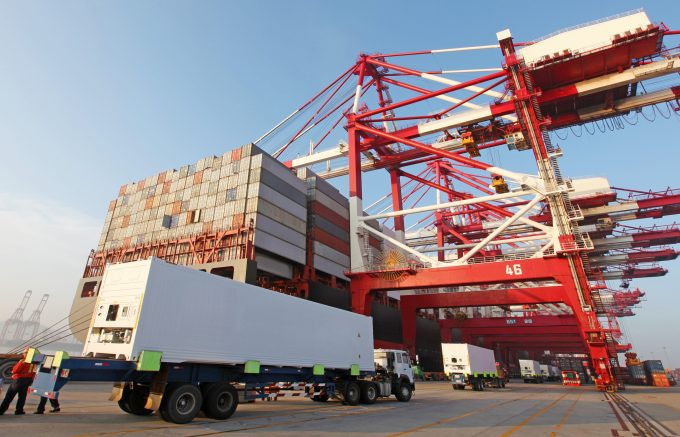TT Club: Acting on climate change
The predicted impacts on ports and waterways of climate change present real risks to local, ...

“Disreputable” shippers are putting lives and the supply chain at risk when they fail to meet the basic safety standards in the Container Transport Units Code (CTU).
Some aspects of non-compliance in container packing had worsened since the 2014 CTU update, warned Richard Brough, technical advisor at the International Cargo Handling Co-ordination Association (ICHCA).
Mr Brough said there had been a near-30% upswing in shippers failing to mark and placard their containers correctly .
“In April 2015, we saw a 40ft container go up in smoke in Vancouver,” he said.
“A disreputable shipper had failed to put a placard on the container detailing the contents – likely to avoid the premium associated with this.”
This had hindered the fire crew’s response to the situation.
“They could not pour water on it in case the contents reacted badly, worsening the situation,” he added.
The contents were later identified as trichloroisocyanuric acid in chlorine packs used, primarily, as a disinfectant for swimming pools.
A Vancouver Coastal Health spokesperson told CBC News the acid was a respiratory irritant that could also harm eyes and lungs. People living close to the fire were warned to close their windows and remain inside, while those needing to go out should “cover their eyes and mouth with a wet cloth”.
Peregrine Storrs-Fox, director of risk management at cargo insurance specialist TT Club, said a number of serious incidents had occurred over the past couple of years.
In the same year as the Vancouver fire, there was a fire at the Brazilian port of Santos and, most prominently, an explosion at the Chinese port of Tianjin, resulting in insured losses of almost $3.5bn.
Mr Storrs-Fox noted that over one two-year period there had been at least 20 major incidents on ships – “likely to be the thin end of the wedge”, he added.
“The issue of mis-declared cargo is massive in the maritime industry.”
Mr Brough said there were roughly 38m containers in use and, according to Maersk, 200m container movements a year – adding that some parties put the annual figure as high as 500m.
“Let’s do some extrapolating,” said Mr Brough. “Somewhere between 10% and 12% of containers are loaded with dangerous goods – let’s assume 10%.
“Some estimates suggest actual unit numbers run at approximately 60% of teu – 22.8m containers, or 120m movements a year. So let’s assume 50% are packed with cargo and that equates to approximately six million dangerous goods movements a year.”
Reports conducted by ICHCA also show that over a 10-year period, 39% of units inspected had issues with placarding and marking, while 4.5% had problems with the packaging itself.
“We even found a 46-tonne bulldozer being smuggled in a 40ft container – almost 20 tonnes over the maximum payload,” added Mr Brough.
Comment on this article
ROGER LAKE KAGAN
March 08, 2017 at 1:26 pmAs a DGSA to over 70 companies, and our Company services over 350 companies in the UK, I am also a consultant to my old business Andersen Harvey Lake & Co now inside the AFWW Group. I currently have a client forwarder , who will not see the traffic he is sending after his client loads the box. The forwarder to his credit felt something was wrong , rang me , and asked me to intervene. As the Shipper was not a client, I charged £50 for an hours telephone and follow up email(still unpaid),the forwarder has no client, he has seemingly shipped the cargo from the UK unlabelled , unplacarded, and undeclared! Until regulatory agency’s such as MCA in the UK advise they are happy to follow up on such reported to them by a DGSA, the port activity or line ditto have no interest . I do not have the booking data to work out which line. Some years ago in Vancouver I did a presentation to the International Marine Underwriters Association on Dangerous Goods. Time for another one Perry ?